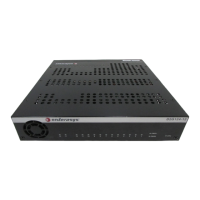show radius
15-4 Security Configuration
Parameters
Defaults
Ifnoparametersarespecified,allRADIUSconfigurationinformationwillbedisplayed.
Mode
Switchcommand,read‐only.
Example
ThisexampleshowshowtodisplayRADIUSconfigurationinformation:
D2(rw)->show radius
RADIUS status: Enabled
RADIUS retries: 3
RADIUS timeout: 20 seconds
RADIUS Server IP Address Auth-Port Realm-Type
-------------- ---------- --------- -----------------
10 172.16.20.10 1812 management-access
Table 15‐46providesanexplanationofthecommandoutput.
status (Optional)DisplaystheRADIUSserver’senablestatus.
retries (Optional)DisplaysthenumberofretryattemptsbeforetheRADIUSserver
timesout.
timeout (Optional)Displaysthemaximumamountoftime(inseconds)toestablish
contactwiththeRADIUSserverbeforeretryattemptsbegin.
server(Optional)
DisplaysRADIUSserverconfigurationinformation.
index|all Forusewiththeserverparametertoshowserverconfigurationforall
serversoraspecificRADIUSserverasdefinedbyanindex.
Table 15-46 show radius Output Details
Output Field What It Displays...
RADIUS status Whether RADIUS is enabled or disabled.
RADIUS retries Number of retry attempts before the RADIUS server times out. The default value of 3
can be reset using the set radius command as described in “set radius” on
page 15-5.
RADIUS timeout Maximum amount of time (in seconds) to establish contact with the RADIUS server
before retry attempts begin. The default value of 20 can be reset using the set
radius command as described in “set radius” on page 15-5.
RADIUS Server RADIUS server’s index number, IP address, and UDP authentication port.
Realm-Type Realm defines who has to go through the RADIUS server for authentication.
• Management-access: This means that anyone trying to access the switch
(Telnet, SSH, Local Management) has to authenticate through the RADIUS
server.
• Network-access: This means that all the users have to authenticate to a RADIUS
server before they are allowed access to the network.
• Any-access: Means that both Management-access and Network-access have
been enabled.

